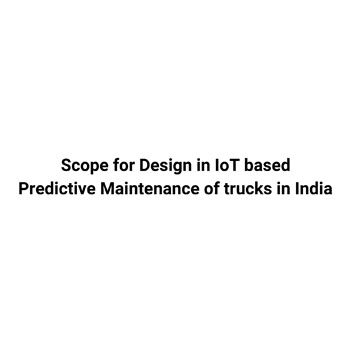Traditionally, maintenance of machinery is performed by either the preventive maintenance model or the corrective maintenance model. With preventive maintenance, the equipment is replaced before it fails based either on limits recommended by the manufacturer or based on signs of physical wear. This approach can prove beneficial for critical equipment, the failure of which can lead to other major failures or simply huge downtimes. However, not all equipment of the same type follows a similar wear pattern. Oftentimes, there is always a portion of the life of the equipment that still remains when the equipment is replaced, leading to an increase in maintenance costs. In contrast to preventive maintenance, corrective maintenance is carried out only when a piece of equipment completely fails, thereby making full use of its life span. This approach might be suited for non-critical equipment that might not directly impact the ability of the machinery to function. However, having equipment that is not in its best health can lead to higher running costs due to reduced efficiency and might take a toll on the lifespan of the machinery.


